To me, searching for a baseball card = treasure hunting. Can you relate to that?
For years, I’ve written about my treasure hunting finds – I would wait with bated breath for the release of the latest checklist to see if an exciting Canseco card was created.
I would (and still do!) get super hyped about a card that was “hot off the presses”:
- Beautiful artwork designed in Photoshop
- Fresh ink applied to brand new, high gloss card stock by the latest and greatest technology
- Machines more expensive than my house apply foil, embed a game used relic, and cut with the precision of a surgeon’s knife
- Top it off with a signature, and the revered 1/1 stamp
There you have it. A masterpiece to salivate over. A creation worthy of intense searching and big money. Created just last week.
Shown below are a few still shots from some Topps & Panini videos I found on Youtube about the production of cards. To me, this is all super fascinating stuff!
https://www.youtube.com/watch?v=obfEPuhpYgE
https://www.youtube.com/watch?v=I-LxhldAIAc


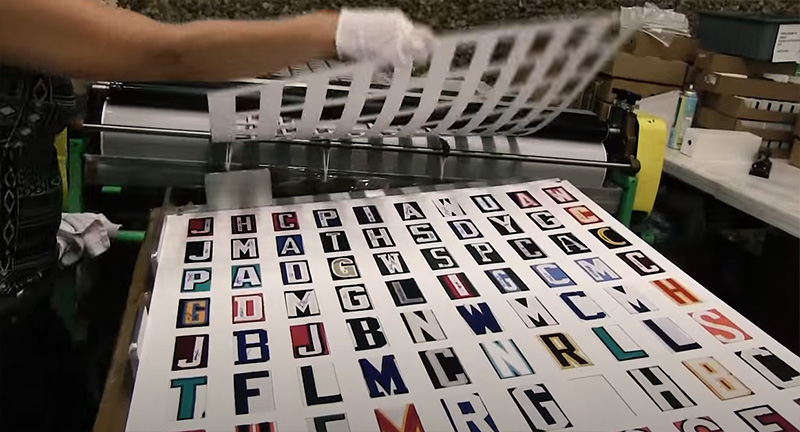
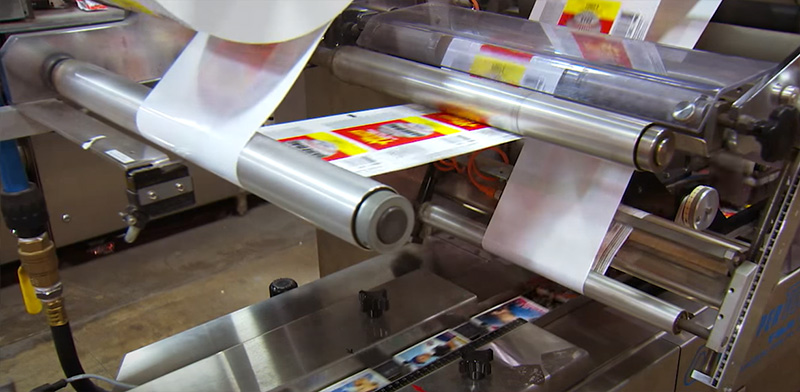
When hunting for that one special card, would I always find success? No. But that’s the beauty of collecting today. If you miss a big card – THE card you were looking for – a card company will likely produce something just as impressive next month. Or the next month. Or the next.
Still, there is a *huge* itch that cannot be scratched no matter how wild the embedded patch is or how much holographic foil is added to the latest card on my want list. I’m talking about the limited number of baseball cards that came from the beginning of the hobby as we know it from 1886 to 1890. There was no foil, no serial number, and certainly no relic or autograph. While the creation and production methods are wildly different between then and now, one thing hasn’t changed: people were as wild about trading cards back in the 19th century as they are now.
Keith Olbermann recently said that the popularity of Michael Jordan and Lebron James might reach the halfway mark of the popularity that Ty Cobb & Honus Wagner enjoyed. Let that sink in for a moment.

Baseball card production initially lasted only a few years, thanks to the American Tobacco Company (ATC) being formed, thus removing the need to produce these expensive little masterpieces as a means to help sell cigarettes. In fact, the next truly popular baseball card wouldn’t show up for another 20 or so years (T206).
Old Judge (N172) and Gypsy Queen (N175) cards are rare. To give you an example, check out the difference between N172 cards, N175 cards, and the gold standard, T206:
- Over 253,000 T206 cards graded by PSA (over the course of 520+ cards)
- Less than 5,500 N172 Old Judge cards graded by PSA (over the course of 1,800+ cards)
- 36 N175 Gypsy Queen cards graded by PSA (over the course of 29 cards)
Rarer still, are Old Judge / Gypsy Queen cards in presentable condition. The chief issue with them is typically photo fading. Here is an example which has happened to many of them over the past 135 years or so:
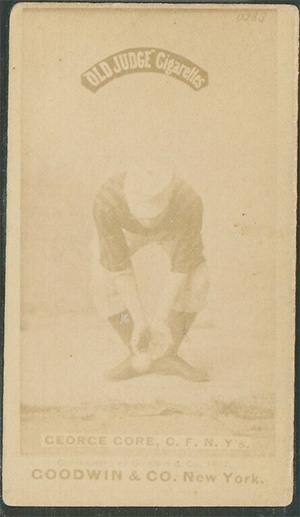
Many people don’t realize the impact that this time period had. For many baseball fans across all of the United States (there were only 38 states at the time!) Old Judge, Allen & Ginter, Goodwin, and others were the only way for many fans to be able to study what their favorite players actually looked like. While Allen & Ginter, Goodwin, and other baseball card brands are beautiful color lithographs, brands like Old Judge (N172) and Gypsy Queen (N175) are actual (2nd generation) photographs, giving many baseball fans a first look at the actual likeness of their favorite players.
The methods of production of Old Judge and Gypsy Queen cards as I’ve learned from “The Photographic Baseball Cards of Goodwin & Company (1886-1890)” by Jay Miller, Joe Gonsowski and Richard Masson are far different from the methods used today. If you don’t have a copy of this book, get one ASAP. It is filled with incredible information!
The backgrounds of many Old Judge cards would simply be a blank wall of the studio from which the photograph was taken. Something like this:

Here is an example of a card with a similar background:
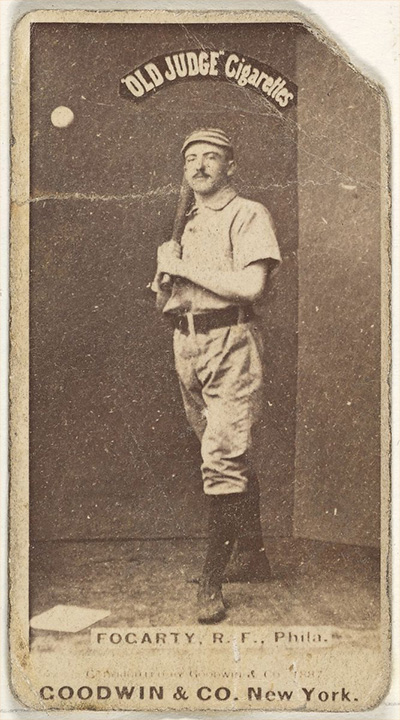
When it came to studio photographs, Victorian Era photography would oftentimes utilize elaborately painted backdrops. Here are a few that have been used.
Here is a chap who loves his bike.

and a woman who looks to be showing off the latest and greatest fashionable bathing suit.
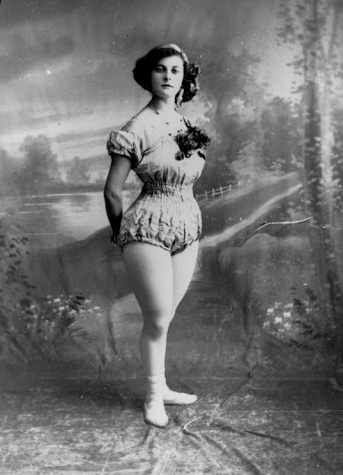
This method was also used on several baseball cards as well, and they make for some of the most interesting of all baseball cards in the 19th century.
![]()
Here is the photo above used in one of my absolute favorite baseball cards:
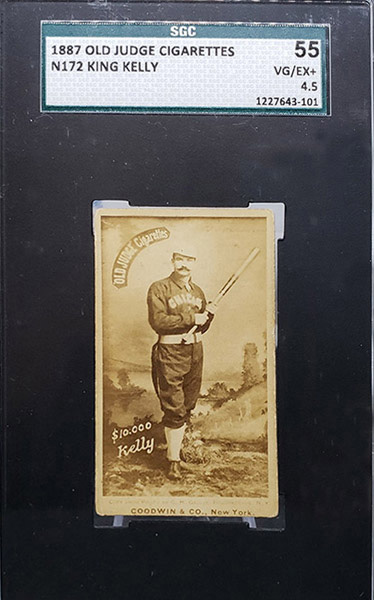
The actual production is pretty fascinating to me, and I think it will fascinate you as well, so let’s walk through how these were created! To do this, we’ll use an old picture my wife took of me while standing in our living room. (Sadly, I don’t have the ‘stache anymore – my wife said I could grow it again when I’m 60!)
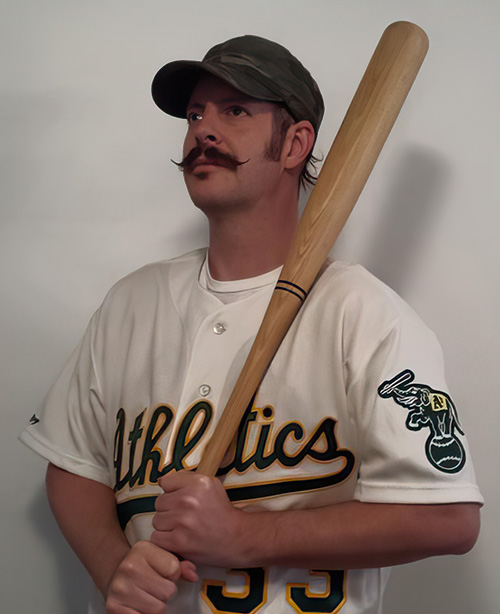
Rather than using a boring wall as a background, let’s use this …
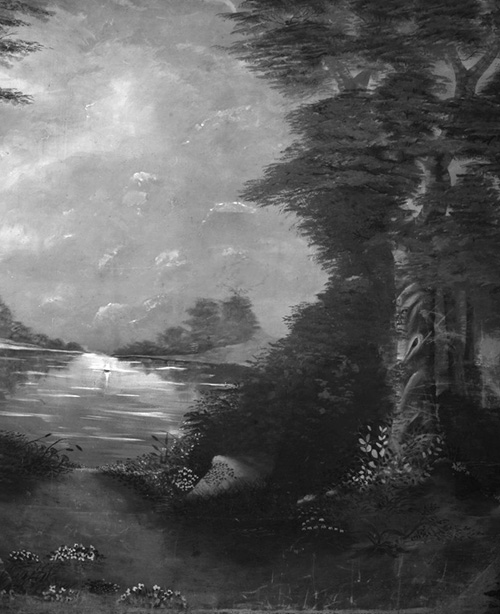
Give it a sepia tone, and voila!
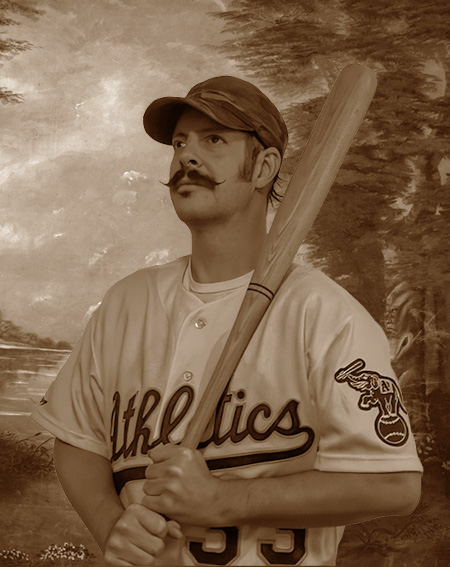
So, this is how the Old Judge & Gypsy Queen cards were made. Several photographs would be placed next to each other like this (different players, mind you…I’m just using mine on repeat) …

and a matte would be created that had names, titles, copyright information, etc. on them …
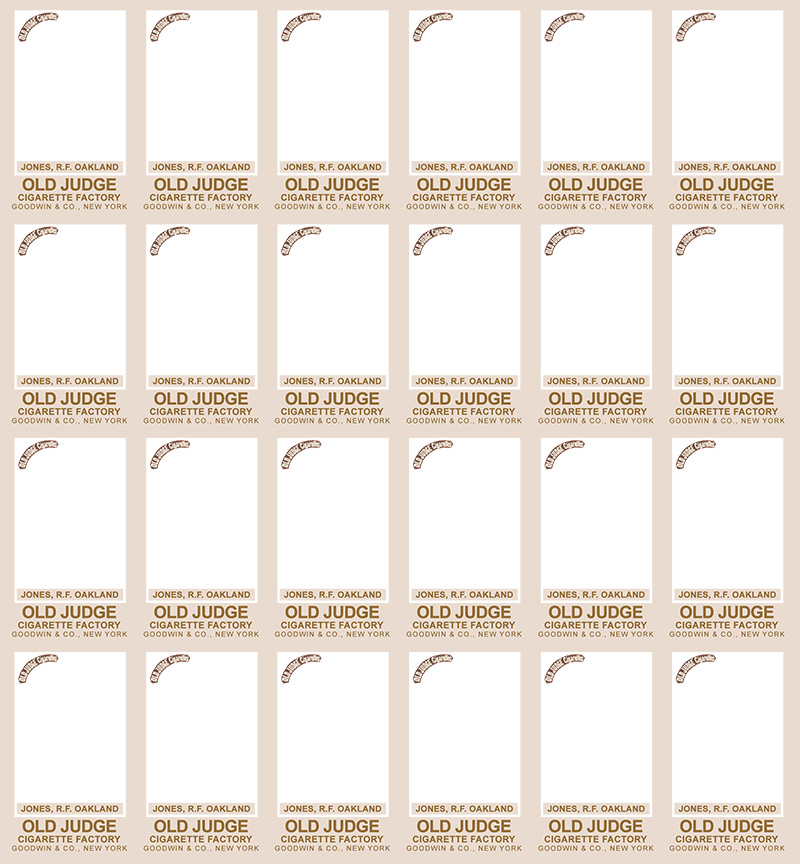
This matte would be placed directly on top of the several photos …

A photographer would take a picture of this matrix of “cards”, and it would be developed, glued to cardboard backing, and hand cut. Voila – some of the first cards ever created, ready to be inserted into cigarette packs.
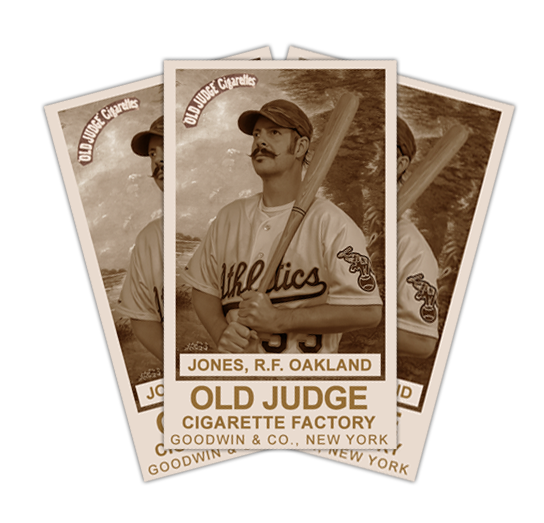
I just can’t get enough when it comes to learning about these. It’s super easy to fall in love with 19th century baseball cards in general, especially when you think about the tremendous impact they had on our sport. These cards may have truly helped baseball – and our hobby – catch fire, and also help us remember the baseball pioneers and royalty who paved the way for our favorite players in the game today.
What is your oldest card, and what do you like most about it?

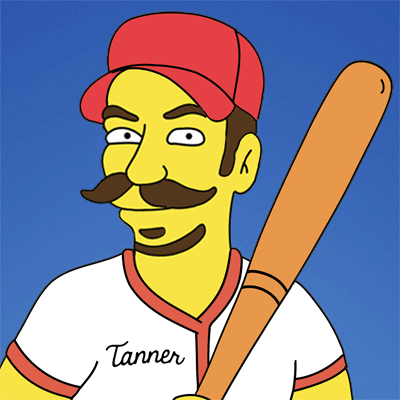

Leave A Comment
You must be logged in to post a comment.